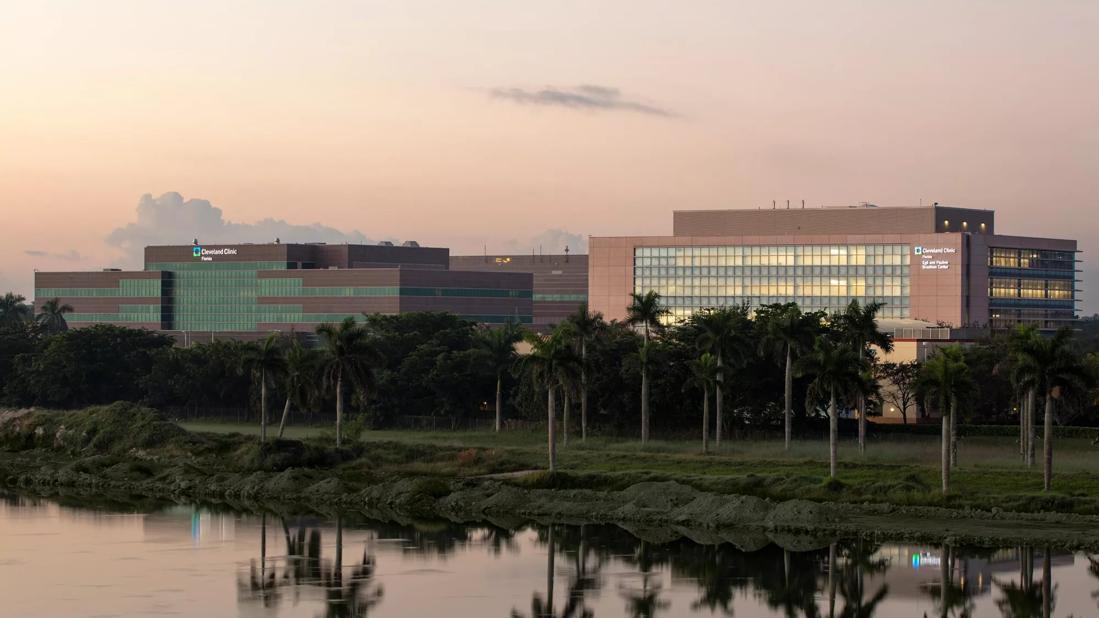Advertisement

By Jose L. Navia, MD, FACC, Director, Cleveland Clinic Florida Regional Heart, Vascular and Thoracic Institute
Advertisement
Cleveland Clinic is a non-profit academic medical center. Advertising on our site helps support our mission. We do not endorse non-Cleveland Clinic products or services. Policy
S. Donald Sussman Distinguished Chair in Heart and Vascular Research
Note: This article is reprinted from Cardiac Care Publication News From Cleveland Clinic in Florida.
Open-heart surgery has long been the standard of care for most patients with valve disease. More recently, however, minimally invasive procedures have emerged as safe and effective alternatives for patients with advanced and complex valve disease. The most common minimally invasive procedures are those performed on the aortic and mitral valves.
The minimally invasive valve treatment program at Cleveland Clinic Florida offers a comprehensive treatment approach from experts in various diseases and conditions such as acute and chronic heart valve disease, heart valve insufficiency, stenosis, endocarditis, and heart failure non-responsive to medical therapies. Our program also provides long-term care toward the prevention of future occurrences.
Our goal is to provide the highest quality cardiovascular care by implementing the latest minimally invasive technology. Last year, Cleveland Clinic Florida performed more than 500 minimally invasive heart operations, including transcatheter aortic valve replacements (TAVR) and MitraClip™ procedures.
Advertisement
Along with only a few other centers in the country, Cleveland Clinic Weston Hospital is proud to offer a robotic-assisted approach to minimally invasive mitral valve repair or replacement. This is the most advanced approach available. Weston Hospital surgeons use a state-of-the-art robotic surgical system that has been approved by the FDA for use in many surgical procedures.
Robotic-assisted valve surgery provides the surgeon with an undistorted, three-dimensional view of the valve, leaflets and subvalvular structures using a special camera. This approach enables surgeons to perform complex mitral valve repairs or valve replacements without the need for division of the breastbone (sternum) or spreading of the ribs.
The surgeon uses a specially designed computer console to control surgical instruments on thin robotic arms. The robotic arms are introduced through a 1- to 2-inch incision in the right side of the chest. The surgeon’s hands control the movement and placement of the endoscopic instruments to open the pericardium and perform the procedure. The enhanced view of the anatomy provided by the specialized camera makes the surgical process easier. Surgeons can access the heart valves with greater precision and less of a physical impact on the patient, which allows for considerably lower time in post-op than with most procedures.
Because robotic surgery utilizes fewer and smaller incisions to introduce the instruments than an open surgery, patients typically experience less pain after the procedure, as well as reduced opportunity for bleeding or infection after the surgery. Some patients are discharged from the hospital sooner than they would be with the traditional surgical approach.
The majority of our patients stay in the hospital only three to five days after the surgery and, when they go home, they are usually capable of independent living. They go back to work within two to three weeks after the operation. That is a significant advantage compared to the recovery after standard operations, which takes almost twice as much time.
Advertisement
Robotic surgery today also can be used for the performance of coronary artery bypass grafting as well as pacemaker surgery for patients who have advanced congestive heart failure.
Most patients who require operations only on the aortic or only on the mitral valve are likely to be candidates for minimally invasive approaches. Those patients, however, who require operations that involve the heart valves as well as bypass surgery are probably going to require a standard approach with the standard incision.
The results from minimally invasive approaches are comparable to those with the standard incisions. However, the recovery is much faster and, therefore, this approach is advantageous to our patients.
In addition to our clinical expertise, our advanced diagnostic and treatment capabilities distinguish Cleveland Clinic Florida’s Heart Valve Center as a center of world-class care for heart valve disease patients. Imaging is used for diagnosis, pre-procedural planning, procedural guidance, and surveillance after repair. Transthoracic and transesophageal echocardiography are the traditional mainstays of imaging, but computed tomography and three-dimensional echocardiography are increasingly important in contemporary practice.
Cleveland Clinic Florida treats more patients with valve disease than any other hospital in Florida. Our surgeons achieve better than expected results for all types of valve surgery, including reoperations and complex disease. Our outcomes are among the best in the world.
Through our clinical expertise, cutting-edge research and innovative program, we assure patients from all over Florida, Latin America and the Caribbean have access to the best care for heart valve disease. By following Cleveland Clinic’s principles of excellence, Cleveland Clinic Florida Heart Valve Center strives for the finest standard of quality in cardiac care, education, research, and innovation, which is available to our patients and to a new generation of healthcare leaders around the world. We are focusing on unmet clinical needs in the field of cardiovascular medicine with the ultimate goal of improving patient care and outcomes.
Advertisement